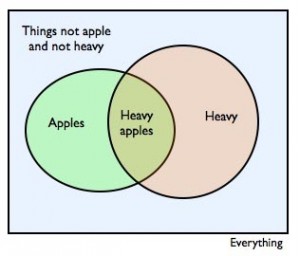Shahn Majid
So far in these posts we have looked at testable quantum gravity effects, but I have not said much about the ultimate theory of quantum gravity itself. There is a simple reason: I do not think we have a compelling theory yet.
Rather, I think that this deepest and most long-standing of all problems in fundamental physics still needs a revolutionary new idea or two for which we are still grasping. More revolutionary even than time-reversal. Far more revolutionary and imaginative than string theory. In this post I’ll take a personal shot at an idea — a new kind of duality principle that I think might ultimately relate gravity and information.
The idea that gravity and information should be intimately related, or if you like that information is not just a semantic construct but has a physical aspect is not new. It goes back at least some decades to works of Beckenstein and Hawking showing that black holes radiate energy due to quantum effects. As a result it was found that black holes could be viewed has having a certain entropy, proportional to the surface area of the black hole. Lets add to this a `black-holes no-hair theorem’ which says that black holes, within General Relativity, have no structure other than their total mass, spin and charge (in fact, surprisingly like an elementary particle).
What this means is that when something falls into a black hole all of its finer information content is lost forever. This is actually a bit misleading because in our perception of time far from the black hole the object never actually falls in but hovers forever at the edge (the event horizon) of the black hole. But lets gloss over that technicality. Simply put, then, black holes gobble up information and turn it into raw mass, spin and charge. This in turn suggests a kind of interplay between mass or gravity, and information. These are classical gravity or quantum particle arguments, not quantum gravity, but a true theory of quantum gravity should surely explain all this much more deeply.
Here then is an idea from a Physics Essays article I wrote some 20 years ago, and now covered in my chapter of On Space and Time. Let’s start with the very simplest theory of ‘physics’ — and I don’t mean Physics 101, I mean at the level of my 1 year old son. At the moment he is busy (I think) naming things, dividing the world into different classes of objects. Apples, pears, fire-engines … and learning about logical connectives such as ‘and’, ‘or’ and ‘not’. What I mean here, broadly, is the logical part of language as a description of the world, something which goes back to Aristotle, if not earlier. The theory consists of statements about objects falling into these various groups. And perhaps you have come across a useful ‘pictorial’ way of thinking about this called ‘Venn diagrams‘. Basically, fix some Universe of all possible things within some context, represented by box. Inside this box different groups of objects are represented as (possibly overlapping) regions.
Now, here is the neat bit. You can just as easily work with the complement of a region as the region itself. Thus if a certain region is called ‘apples’ then its complement ‘not apples’ is some other perfectly good region or concept. Although not formalised till many centuries later in the work of the British mathematician de Morgan, classical logic at this level has a deep symmetry in which speaking about a class of objects is equivalent to speaking about its complement:
“This is not an apple or an orange” is equivalent to “This is a not-apple and a not-orange.”
It would be quite cumbersome but we could systematically replace the concept of apple by the concept of not-apple in all of our language. In working with complements you have to interchange ‘or’ with ‘and’ (as in the example above) and ‘nothing’ with ‘everything’ (within some context) and so forth. It is a transformation of the whole way that we talk about the world. In the case of apple and oranges it’s obviously better to work with a ‘localised concept’ than with the delocalised ‘not-apple’ but what about adjectives such as ‘heavy’ where there is less of a bias? “This is not a heavy apple” is equivalent to “this is either not an apple or it is not heavy.”
Even among material things it might not be so clear cut. For example, spacetime is all pervasive and in geometry we tend to speak in terms of points where a common property of spacetime is not true, such as where the curvature is singular. So we could imagine an alien race of people who use language in a reversed way to us and at the level of Aristotle and logic, they will have a transformed but equivalent view of the world.
Clearly this complementation-symmetry of logic is lost in more advanced theories of physics. It was lost as soon as Newton discovered gravity, because real apples cause gravity (curve spacetime as we say these days) while not-apples need not.
My proposal is that in quantum gravity something like this complementation symmetry should be restored.



Comments are closed.